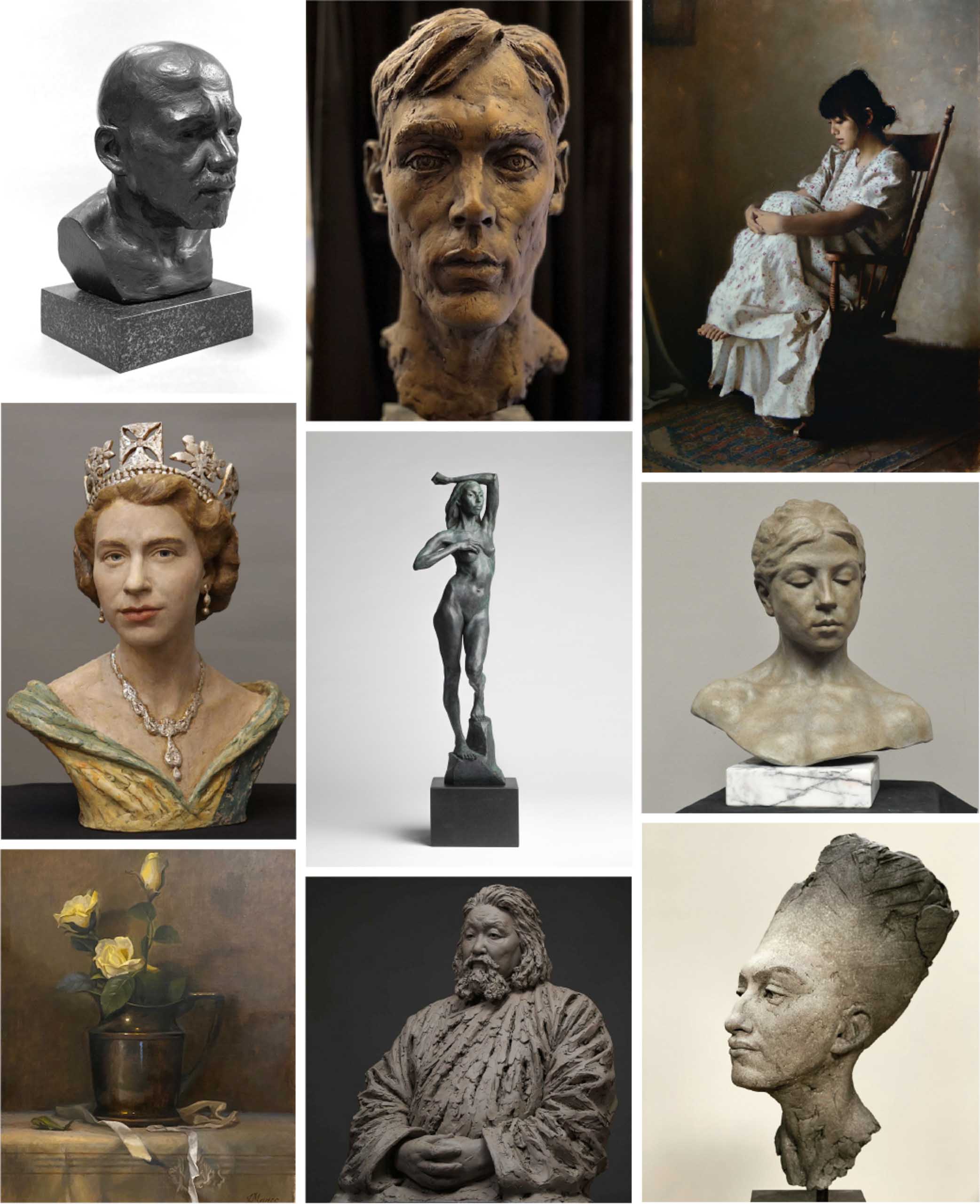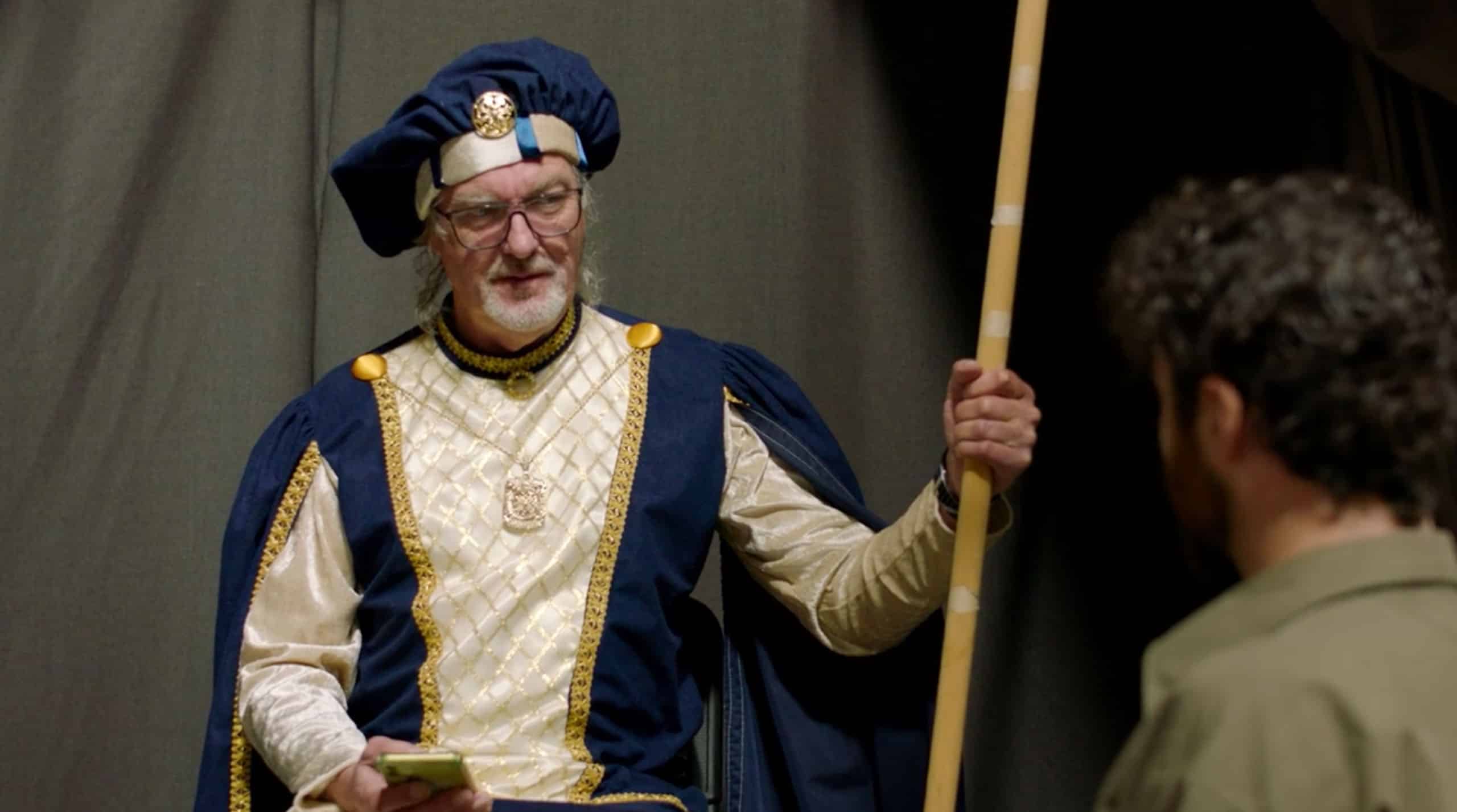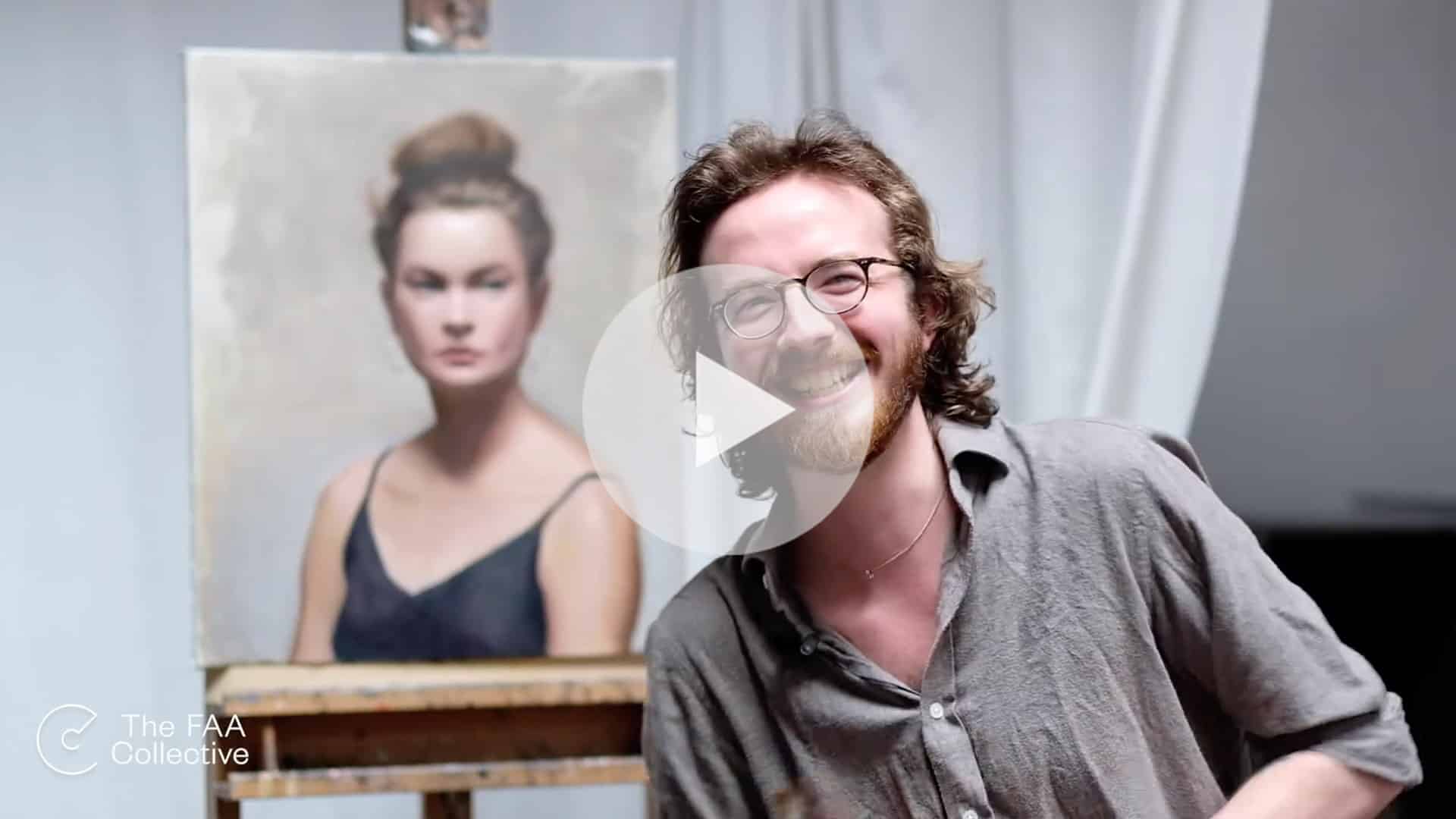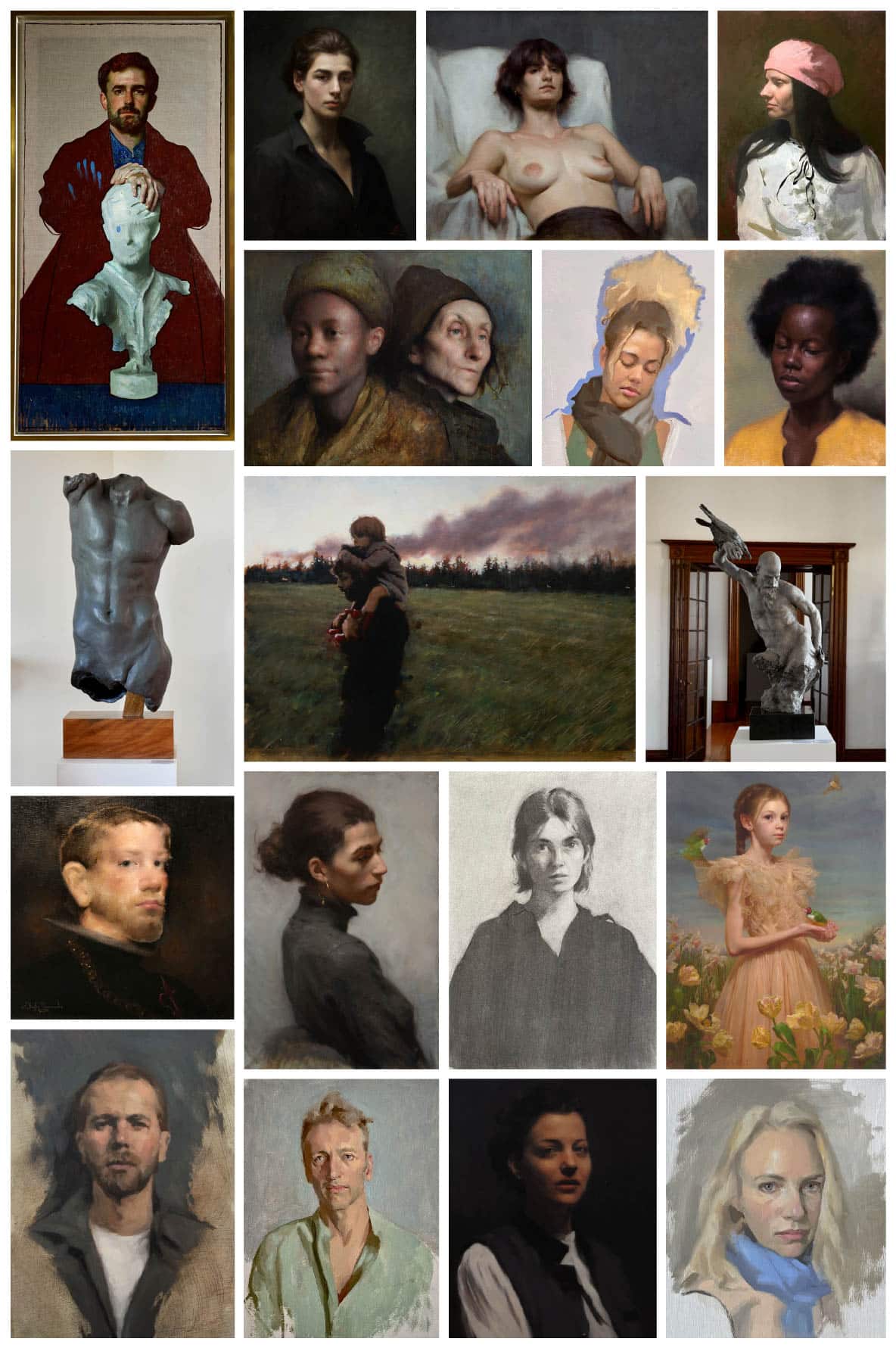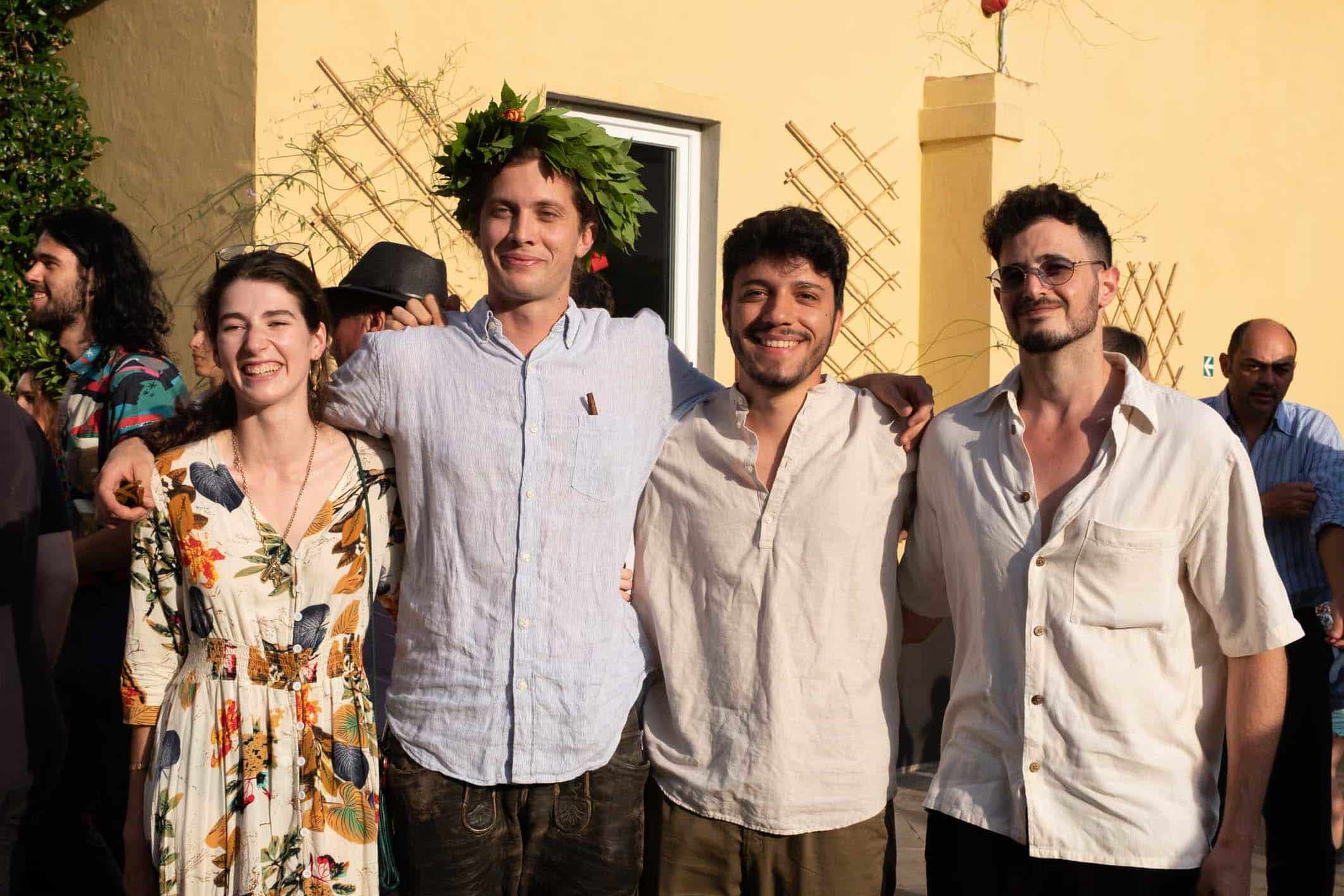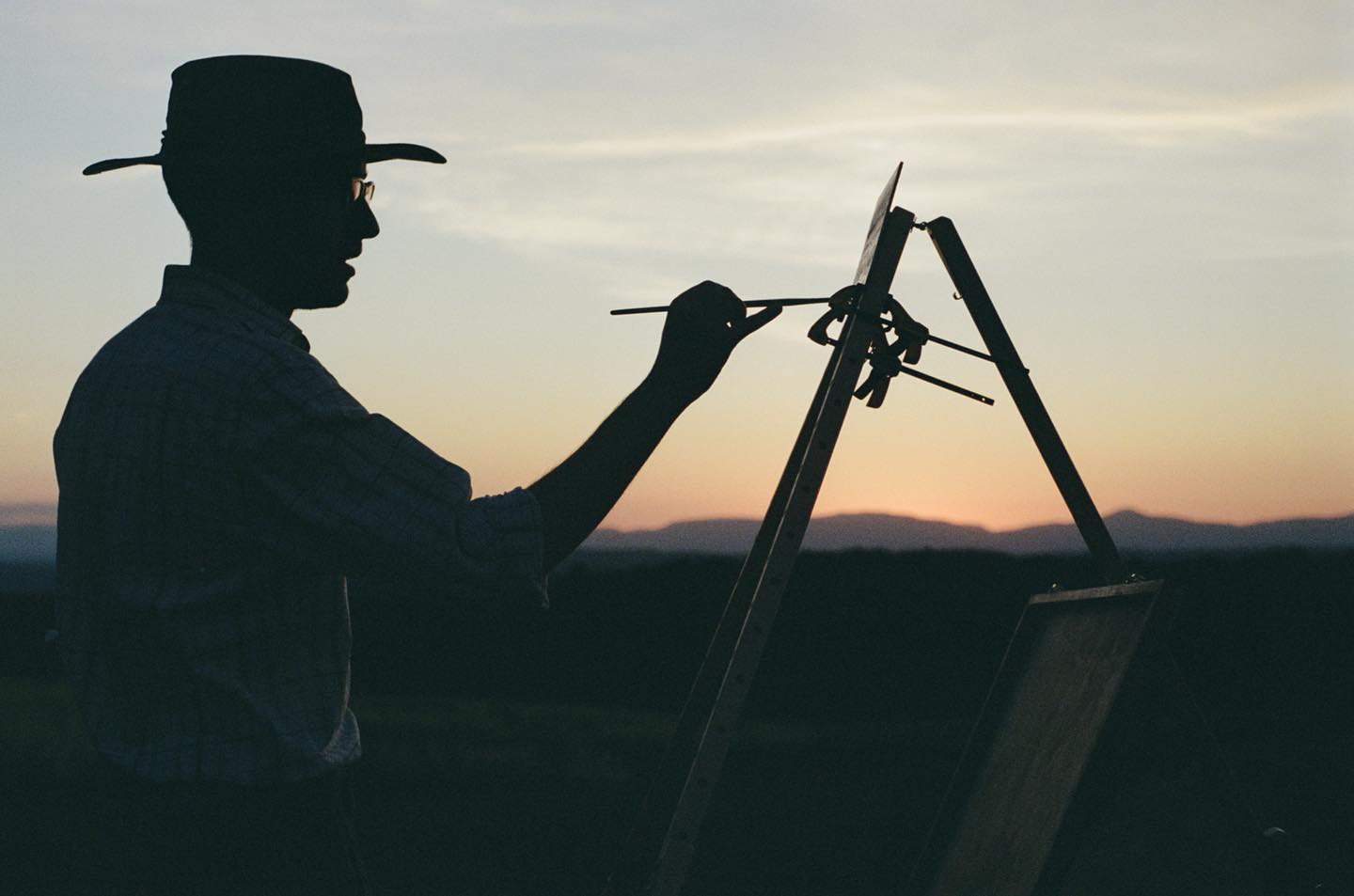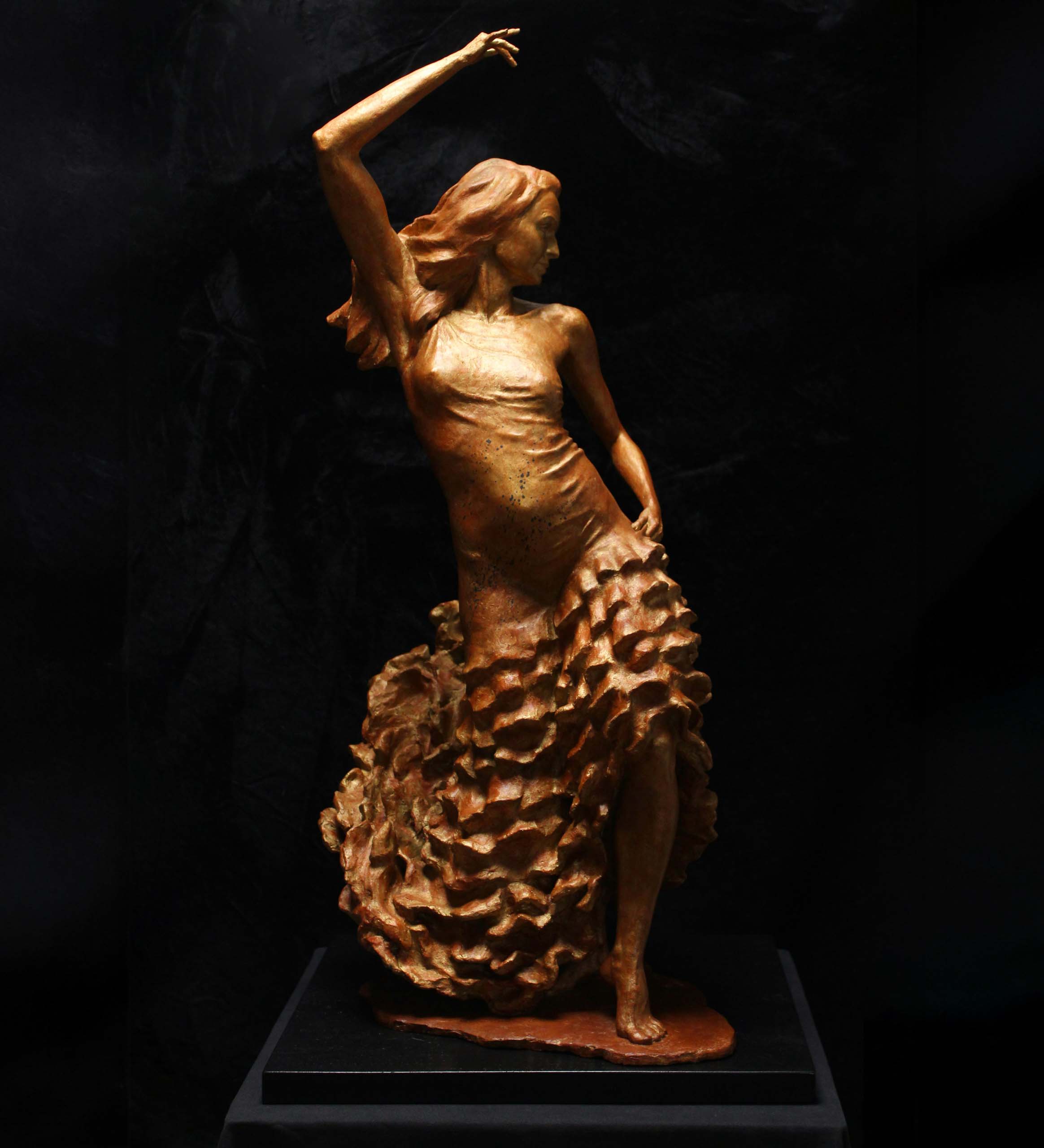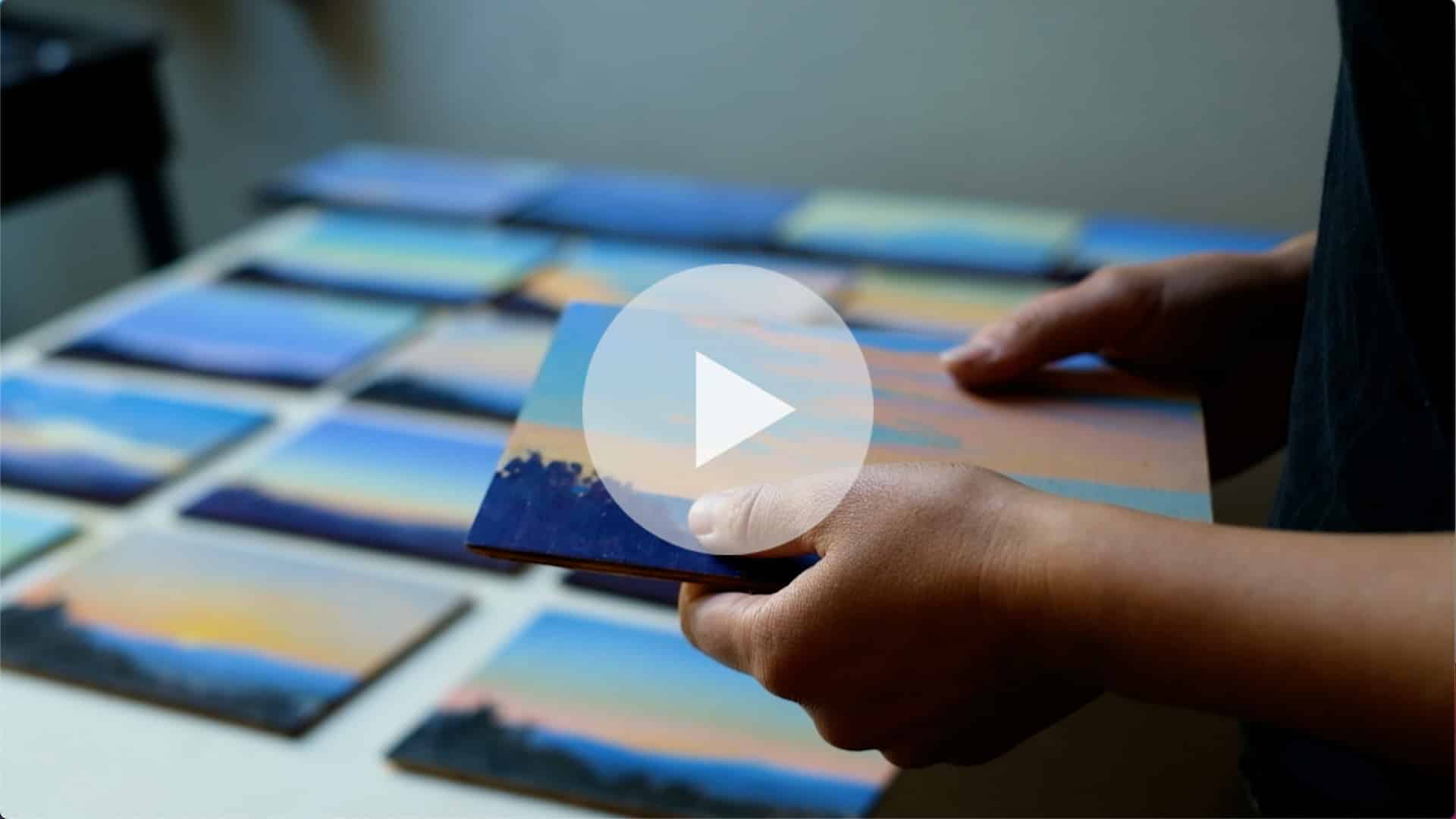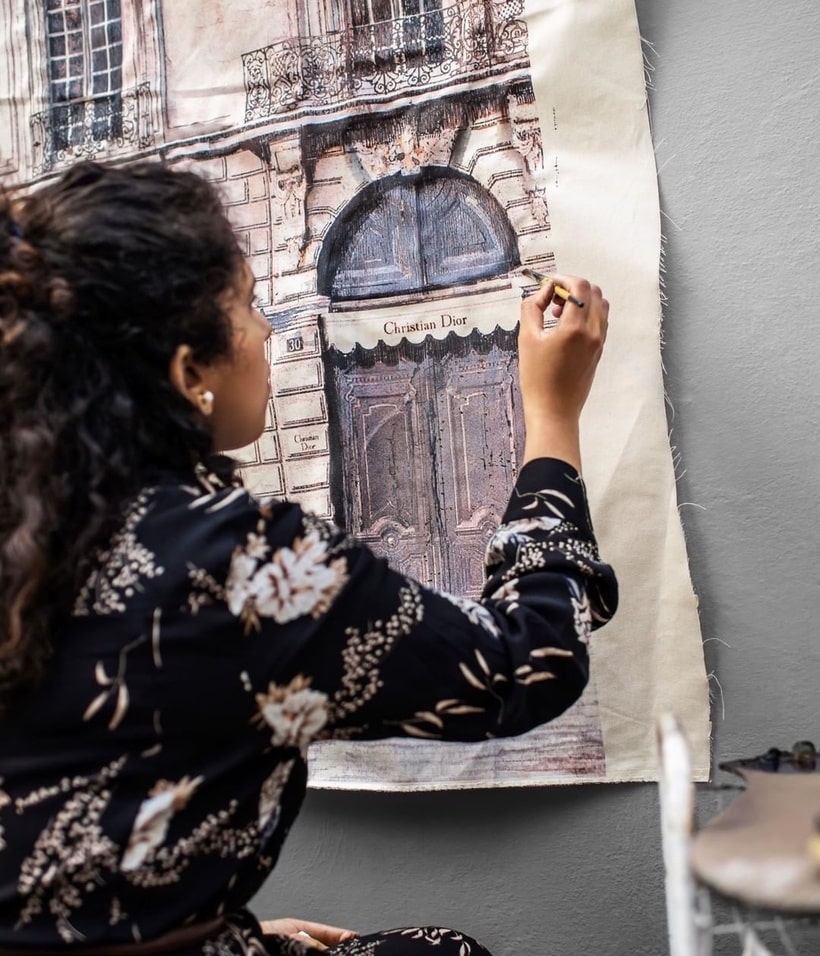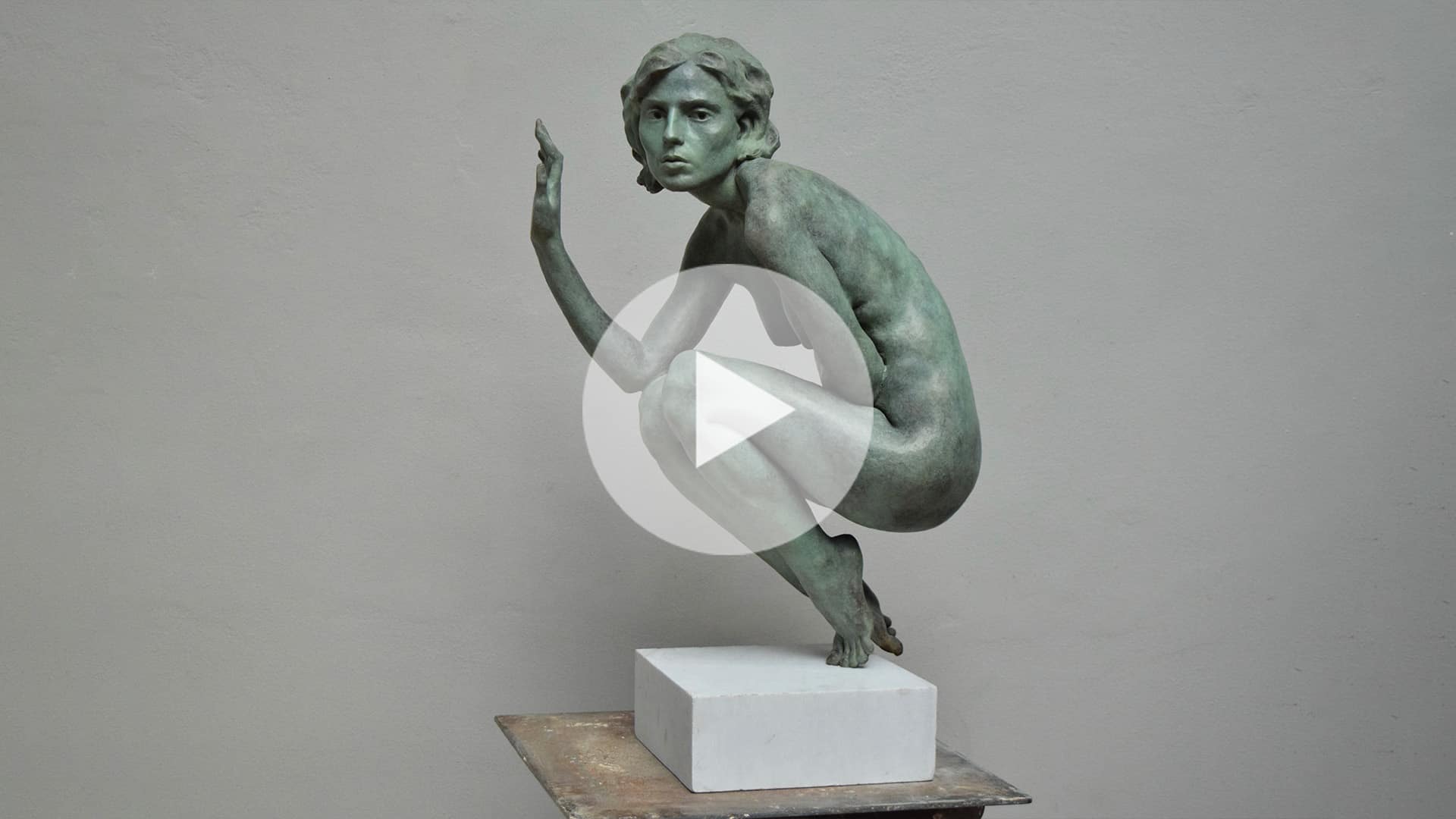February 25, 2022 / Eye on the Collective
The Living Legacy of
Daniel Graves
The beauty of these [Bargue] drawings was none of them was over modeled, so by copying them, students would learn to reproduce the subtly of half tones and shadow edges, as well as correct outline and proportions.
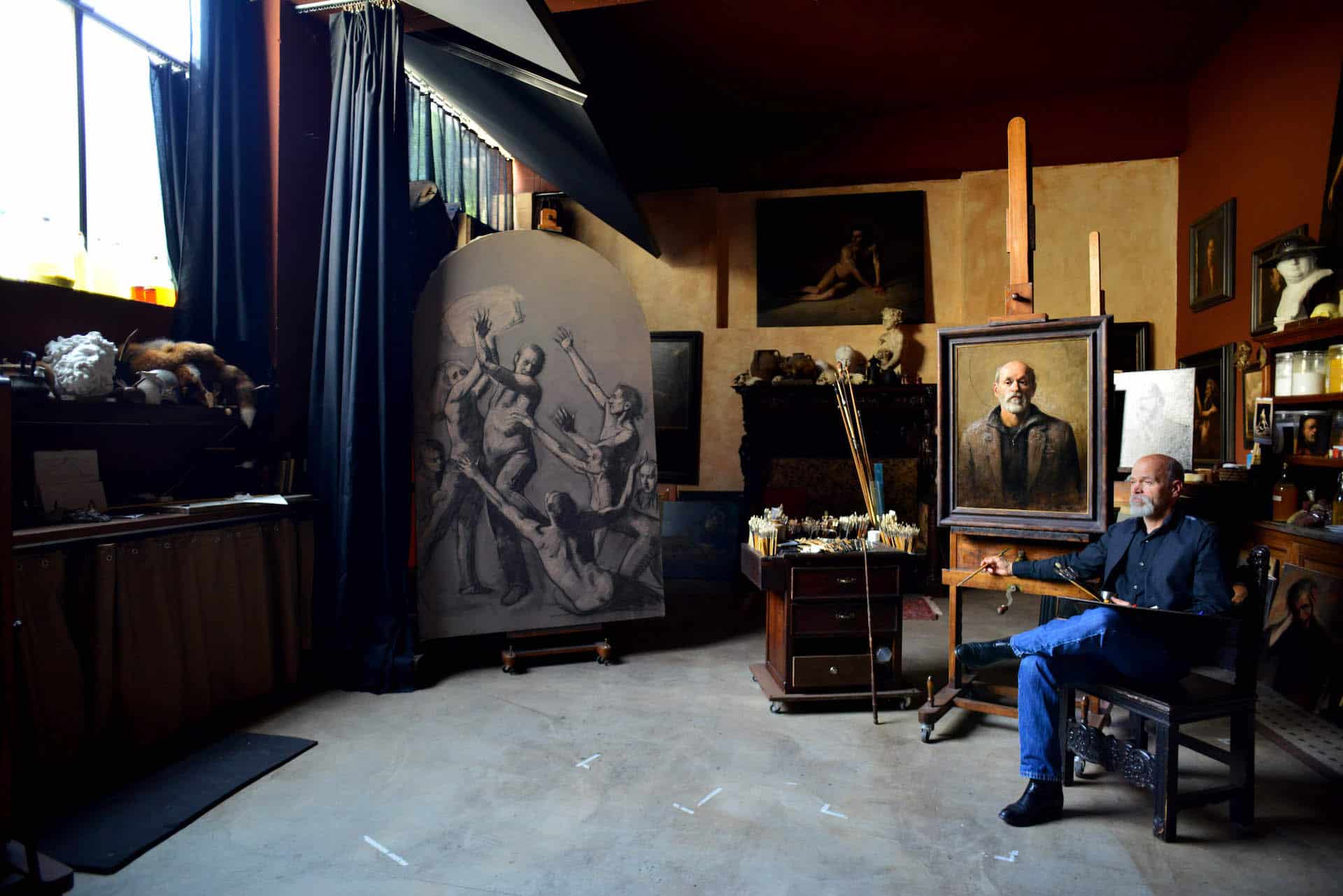
Daniel Graves in his studio - photo by Alexandra Morris
Back in the mid 1980’s, Graves was in London and came across his first lithograph of the female torso on a pedestal in a market on Kings Road.
Graves paid 20 pounds for what would turn out to become one of the most used didactic tools among today’s leading ateliers.

Bargue drawing
“Female Torso on a Pedestal”
What was this litho? What had he found? Graves’ quest took him through his address book of fellow artists and art historians. Someone at the Shepherd Gallery in New York had seen a plate, and the Art Historian, Gerry Ackerman, talked about a book. It was Ackerman who mentioned to Graves that Bargue plates were part of the collection at the Victoria & Albert Museum.
That is precisely where Graves went, by this time in the late 1980’s, to find the entire collection of 200-plus lithographic drawings, composing what we know today to be the “Cours de Dessin”. Produced by the 19th century artist, Charles Bargue, on request of Jean-Léon Gérôme, who, at that time, was head of the École des Beaux-Arts in Paris, these drawings were used by students preparing for the école’s entrance exam.
Graves says, “It was a big revelation when I saw the complete set. It all made sense to me, and as I viewed the 200-plus plates, it began to sink in how important these drawings were to students at the time. It was a “go-to” manual used all over Europe by anyone who wanted to enter an academy or atelier. Let’s say you lived in Lyon, without access to what was happening in Paris, you could prepare yourself by copying the plates in the “Cours de Dessin”.”
Eventually, Gerry Ackerman reprinted the full collection of Bargue plates in his book, “Charles Bargue and Jean Léon Gérôme, Drawing Course”, ARC Edition, 2003.

“Charles Bargue and Jean Léon Gérôme, Drawing Course”
ARC Edition, 2003
Graves does not believe the drawings were ever actually used in the 19th century academies or ateliers as teaching tools, however, he feels sure there was a greater motivation behind why Gérome commissioned the drawing course in the first place. “They (the drawings) were made partly because Gérome felt the need for a manual to help impart a taste for the classical ideal among young artists, and to influence their future artistic decisions towards what was beautiful.” For this reason, says Graves, there are lots of examples of Greek sculpture among the Bargue plates. Young artists from simple backgrounds could acquire the good taste of the day through the copy of these and other master drawings.

Graves returned from the V&A having photographed all of the Bargue plates in the collection. He did not start to use them in his teaching until he founded The Florence Academy of Art, and opened the first studio on Via della Scala in the gardens of the Corsini family home. He introduced them immediately to the curriculum, and the beginning students started copying them right away.
Much like today, the drawings were mounted on boards and students taped their paper alongside. Originally, the limitations of analogue photography allowed for an A4 size reproduction (8-1/4 x 11-3/4 in / 21.0 x 29.7 cm), so students copied Bargues in pencil; a few years later, with a better set of negatives, Graves created larger copies and students began working in charcoal on a larger scale. Using plumb line and string, they would take measurements to create an accurate copy.

Graves knew from the moment he saw the “Course de Dessin” at the V&A that he could create a truly viable exercise for students. “The beauty of these drawings was none of them was over modeled, so by copying them, students would learn to reproduce the subtly of half tones and shadow edges, as well as correct outline and proportions. Copying the Bargue drawings also goes hand in hand with the sight size method of measurement. By stepping back and viewing the whole drawing from a distance, you see the entirety of what you are copying translated onto the paper. Eventually, when you are painting a portrait, you will step back to search for the same breath, space and roundness of the whole.”
Has Graves changed how students are copying the Bargue drawings since the fist time he introduced them? Although the FAA course has evolved in 30 years, and the language of instruction has become more effective, Graves says, the original reason why they were made or how to use them was never altered: “The Bargue drawings were made as a helpful tool to gain skills to draw something realistically. “
This fantastic story was recently featured in the May/June print edition of Fine Art Connoisseur in “Bargue Encore: An Academic Tradition Revived”.
In addition, Daniel’s story as an artist in Florence was recently featured in the English-language Italian publication The Florentine!
More about Daniel Graves
Born in 1949, in Rochester, New York, Daniel Graves graduated from the Maryland Art Institute of Art in 1972 where he studied with Joseph Sheppard and Frank Russell. He continued his studies at the Villa Schifanoia Graduate School of Fine Art in Florence, Italy, with Richard Serrin. Following a course of training with Richard Lack in Minneapolis, Minnesota, he taught at the Atelier Lack Studio of Fine Art. In the late 1970s, Graves returned to Florence and undertook individual study with Nerina Simi, who maintained a classical nineteenth-century studio. In 1991, he founded The Florence Academy of Art, and has led this institution to become the forefront of classical realist art education for more than thirty years. When he is not teaching, Graves is an active painter of figures, portraits and still lifes in his studio in Florence. He pursues landscape painting during his extensive travels. His work is in both public and private collections in the U.S. and abroad.



